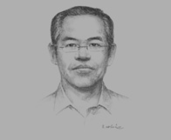Hasbullah Thabrany, President, South-east Asian Public Health Education Institutions Network: Interview

Interview: Hasbullah Thabrany
What are your priorities for the National Social Security System, and how do you see its implementation alongside the Social Security Organising Body (BJPS)?
HASBULLAH THABRANY: We decided to utilise public financing to ensure that those most in need would receive health care for free, while still securing operational efficiency by using competition by market players. The system’s success is based upon public refinancing, whereby the population shares the burden of health care provision. As such, the biggest hurdle is the government’s price setting for the BJPS, which is being negotiated among the government, employers and labour unions. However, one danger is that unions will petition for the lowest contribution without considering the benefits of such a system for their workers in the long run. If there is not enough money contributed, then the quality will be poor. While the concept is that everyone will eventually contribute, the population living below the poverty line cannot be expected to. If we look at the $2 per day World Bank poverty standard, we still have about 45% of 110m people living below such a level. We are thus working with the Ministry of Finance and the Ministry of Health to ensure that health quality goals can be achieved at a low cost. The government’s contribution is still to be decided, but the private sector will offer a minimum of 5% of the worker’s salary. The maximum level of tax in Indonesia is 35%, with overall collection low, so we cannot rely too heavily on the government.
How can the varying fees charged by clinics and hospitals of different calibres be harmonised?
THABRANY: It is difficult to identify those services which can be accurately benchmarked. A complex procedure like brain or cardiac surgery, for example, can cost three times more than at a private hospital in Malaysia because there is no regulation on price here. The Malaysian government regulates private sector pricing to keep it competitive, while also providing stimulus for production of good quality products by limiting import tax on medical equipment and drugs. In contrast, our government still taxes drugs for cancer, which may cost $20,000 and are therefore considered luxury goods. Unfortunately, Indonesian doctors are also often able to charge whatever they want, even in public hospitals because they allocate people into different classes. Although the government has in the past required public hospitals in Jakarta to allocate at least 70% of beds to low-income patients, they actually provide something like 20%, in favour of accommodating affluent patients who will pay more.
Are there going to be enough doctors, nurses and care staff to support these new hospitals?
THABRANY: While we have enough general practitioners, they are unevenly distributed. We mainly lack specialists, though the surplus in the Philippines and Vietnam can help with this shortage. The difficulty lies in changing mindsets in Indonesia, in particular among medical doctor associations and the government, who are afraid of outside competition. The key is to open their mind to maximising the quality of our health care, which means bringing in foreign doctors.
How will the relationship between the two social insurance bodies be managed?
THABRANY: There are two social insurance agencies, Askes and Jamsostek. Askes is managing insurance for civil servants and public employees, while Jamsostek is managing social insurance for private employees. However, our previous social insurance law contained an “opt out” option, meaning that private sector employers who could afford private health insurance were not mandated to join Jamsostek. As such, only 5% of employees in the private sector are currently enrolled in the scheme. We thought that those employers were insuring their employees via the private sector, however, the numbers do not add up. In fact, there are only about 7m people (including family members) enrolled, which is just 5% of the total. We have thus moved to reform the system to ensure that there is no more opt out.
You have reached the limit of premium articles you can view for free.
Choose from the options below to purchase print or digital editions of our Reports. You can also purchase a website subscription giving you unlimited access to all of our Reports online for 12 months.
If you have already purchased this Report or have a website subscription, please login to continue.

